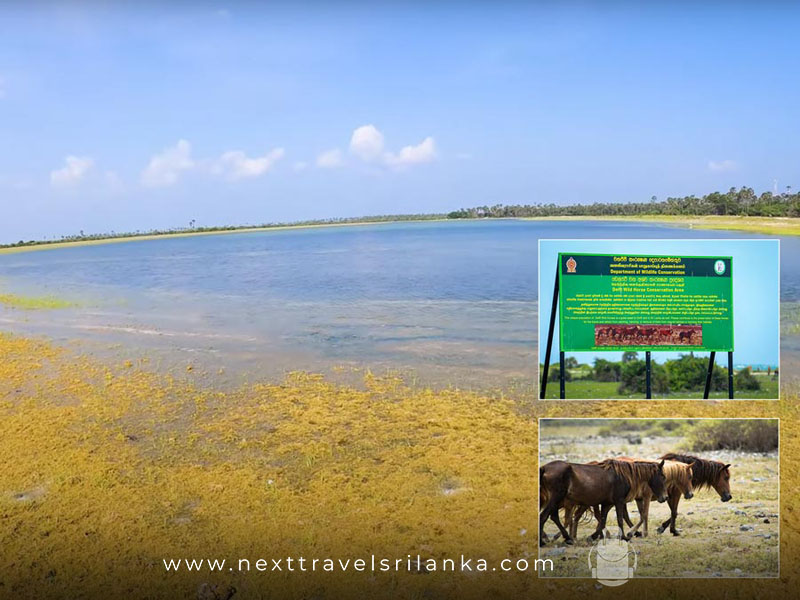
Are you a nature lover who seeks peace in a coastal yet green environment? Then here comes the best option for you! Yes, it is the Delft National Park!
It is one of the less known, less popular, yet one of the most significant national parks in Sri Lanka. As per the name, it is situated at the very end of Northern Sri Lanka, on the Island named Delft. This area was earlier popular with the name Neduntheevu. Importantly, this is one of the few green-filled national parks in Jaffna, which is a highly dry area in Sri Lanka. However, it is the only place on the Island to witness the wild ponies. Thus, it is always worth visiting this park if you are visiting the Northern part of the island.
History Related to Delft National Park
Looking deeper into the establishment of this particular national park is indeed necessary! Yes, that is because it is quite rare to find such a park in that part of Sri Lanka.
This is not originally a nature-made park. In fact, this is a successful project of the government. They started it aiming to establish a national park with an area of 1846 ha. in a part of Delft in the form of an Integrated Strategic Environmental Assessment of Northern Province in 2014. This is a collaborative attempt of the government with the United Nation Development Program and the United Nations Environmental Program. As a result, in 2015, the government declared that part of delft along with Adam’s Bridge, Chundikulam, and Madu Road as a national park. With all the settings, Delft became a national park, particularly on 22 June 2015, and opened for people.
However, this island itself has a wonderful past as well. It got its name from the Dutch city of Delft! Wondering how it happened?
As you might already know, Dutch invaded Sri Lanka during the colonial era, and as a result of this, the island got its name. Besides, the remains from these invasions are still visible on Delft Island, and the Fort around it is such a highlight.
Apart from that, this island has ruins of an old temple that most probably belongs to the Chola dynasty during the kingdom eras as well. So, owing to all these reasons, it is clear that the land of this Delft National Park has a significant bond with the history of Sri Lanka, and thus, its worth is magnified.
How to Visit Delft National Park?
Reaching the National park itself is an adventure that sparks your eyes with rare wonders in Sri Lanka. The journey is not easy yet fun-filled and overflowing with new experiences. The change happens with the mode of transportation.
First, you have to travel up to the country towards Jaffna in order to reach this island. Thereafter, it is not a normal journey by road, but by air or water. That is the only way that the island is accessible. However, after reaching you need to go to Pungudutivu, and then take a boat to ride through the space between two islands. This boat ride will expose you to a more eye-catching world which is a combination of sandy land and blue water with birds and aquatic creatures in sight. Hence, from the journey itself, this visit is worth having.
Environment and Climatic Condition of the Delft National Park
Generally, the climate is tropical within the island. However, the seasonal climatic condition is quite different from the other parts of the country. The rainfall is considerably higher in summer times and in wintertime, the rainfall is less. The average temperature in Jaffna is 27.7C and rainfall is 1152mm. However, it is better to visit the island mostly in winter times since the traveling mode is connected with water and all.
Flora and Fauna
Within the 18 square kilometers of the land, one can find rare beauties and creatures on Delft island. Not only land but also seeking attention through the aquatic environment is also one of the remarkable features of the island. Most importantly, this is the only place where the wild ponies can be found and thus, this island earns a noteworthy attraction of animal lovers and animalists. Besides, this has been a house for most of the migrant bird species and aquatic creatures as it is a population-free island. Hence, this island is one of the best places in the country as a habitat for wild animals. However, terrestrial faunal species recorded on Delft Island are as follows.
- Pantala flavescens (Wandering glider)
- Diplacodes trivialis (Blue percher)
- Tramea basilaris (Burmeister’s glider)
- Lathrecista asiatica (Pruinosed bloodtail)
- Orthetrum luzonicum (Marsh skimmer)
- Neurothemis intermedia (Paddyfield parasol)
- Appias galane (Lesser albatross)
- Colitis aurora (Plain orange tip)
- Sphaerotheca breviceps (Banded sand frog)
- Echis carinatus (Saw-scaled viper)
- Ptyas mucosa (Rat snake)
- Calotes versicolor (Common garden lizard)
- Falco tinnunculus (Common kestrel)
- Charadrius dubius (Little ringed plover)
- Charadrius alexandrinus (Kentish plover)
- Lonchura malabarica (Silverbill)
- Francolinus pondicerianus (Grey francolin)
- Streptopelia decaocto (Eurasian collared dove)
- Sterna bergii (Great crested tern)
- Nycticorax nycticorax (Black crowned night heron)
- Herpestes brachyurus (Brown mongoose)
- Herpestes edwardsii (Grey mongoose)
- Pteropus giganteus (Flying fox)
Shallow waters, coral chunks, and sands surround this semi-arid tropical, flat island. At the same time, it is the sand that covers most of the parts of this island as well. Owing to this reason, as per vegetation, one can witness no more than palmyra, dry shrubs, and grasses growing on coralline soil. Not much significance for flora, but is attractive with the unusual environmental conditions.
The Best Time to Visit the Park
Months from July to August are the best to visit Delft National Park if you want to experience the soothing weather with the nice and comfortable occasional breeze. Since January & February are a bit cooler and wet, it is not suitable to visit Delft National Park. As for the time of one particular day, morning is far better than evenings to take ferry service. In fact, the weather could be quite uncomfortable and unpleasant in the evenings. However, when considering visiting the park, make sure you have a thorough analysis of the weather conditions and environmental conditions.
Photography Opportunities at Delft National Park
This paradise which is situated approximately 30km away from the mainland of Southern Sri Lanka is indeed a rare photogenic spot in the country. The rustic and remote ecosystem of the park with shallow waters and sandy beaches make it a perfect ambiance for photography. The presence of worthwhile monuments also makes the park eligible for the purpose along with a beautiful sightseeing experience. Further, the chain-like Adam’s Bridge Marine National park laid beside it adds more quality to the camera eye. Since this is one of the well-known tourist attractions in the country, photography opportunities are high in the Park.
Conservation of the Park
As mentioned throughout, this park has such valuable biodiversity and an ecosystem. At the same time, the only wild ponies that can be found in the country are on this island. Also, the sandy beaches and coral grounds surrounding the island are such a rare sight with such a pleasant ambiance. Also, this park is specially designed to attract tourists and gain recognition to the island as it is also a minimalist part of the country. Simply, this has added value to the tourist industry in the country while increasing the revenue to the country. Thus, this park along with the island as a whole should be conserved with special attention since such a rare beauty with pure ecosystems is unique in the country.
The Bottom Line
Above all, if you are a nature lover longing to spend some time in the greenery while experiencing a unique charm of a different ecosystem, a visit to the Delft National Park is simply a must. If you are to visit it, the views that amuse your eyes, the climate that would soothe your soul, and the significant wildlife that makes your visit special are promises for you. So, what are you waiting for? Plan your visit to this wonderful land of greenery, and enjoy this delight yourself. Happy and Safe Travelling!

